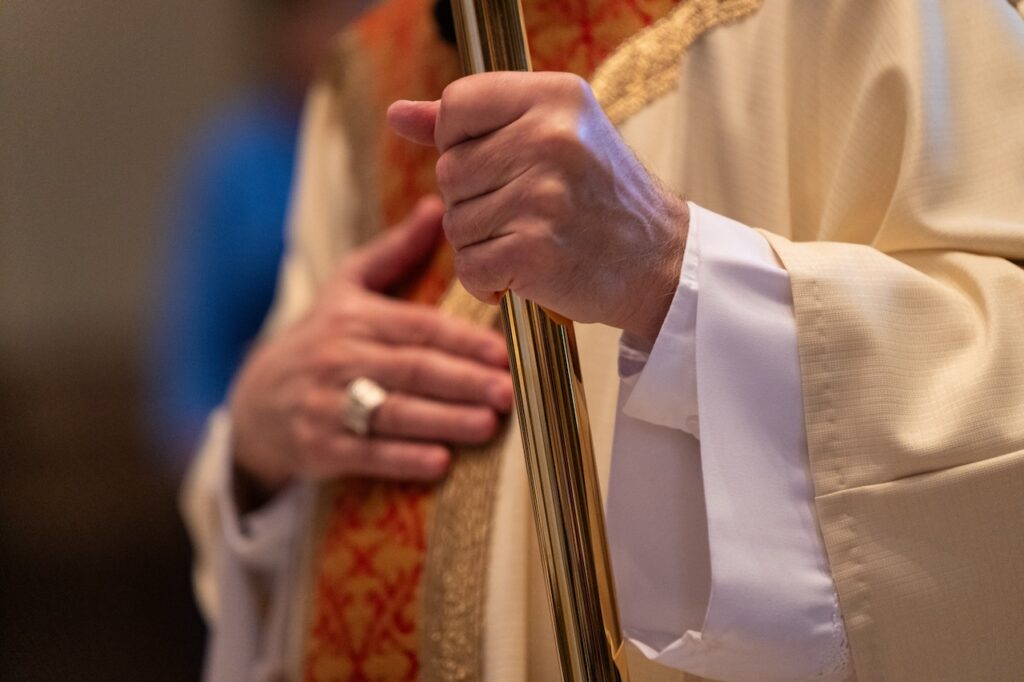One of the drawbacks when Christian observances are secularized is that the celebration is reduced to its commercial benefits. Christmas becomes about Santa and decorations; Easter becomes about the Easter bunny and candy – often ignoring, or with little mention of, the real reason we are celebrating.
So also, the celebration is focused on one day. Once it is over, there is a tendency to quickly move our attention to the next secular holiday.
Fortunately, our Church, as it does with Christmas, makes our celebration of Easter a season. Unlike much of the secular world, which sometimes focuses on the failures and tragedies of the past or considers much of the past irrelevant, our Church treasures our history in which God has promised us life and guides us in living it.
Rather than ignore the traditions and teachings of the Church, we embrace them and hand them on to the next generation. This is the patrimony of our Church and of our salvation.
At times, it seems that much of the world looks at the past without gratitude and at the future without hope. Worries about the present and fears of political and economic upheaval can seem overwhelming. The result is a society immersed in the urgent concerns of the present, where only the here and now matters.
However, as we experienced during the Easter Vigil, our Church looks at the fullness of salvation history. The story of creation reminds us that from the very beginning, God’s intent was that after the fall we might be restored to the joy and fruitfulness of his kingdom.
He has directed all of salvation history toward that end. We look at the past and we see God’s active hand in it, something to be treasured and brought into the present and future.
As we look to the future, we anticipate the fulfillment of God’s promises, the fullness of life and love in his kingdom. Thus, the Easter season helps us connect our faith with the past, with all that God has done throughout history, calling people together, preparing them for salvation and granting us that gift through Christ’s Paschal Mystery. This is why we can look to the future with hope and longing of God fulfilling his promises.
Our celebration of Easter as a season flips the world’s narrow focus and experience on its head. We can live in the present, not in a selfish, myopic way, but in knowing that we are sojourners on pilgrimage. Like the disciples whose stories we hear proclaimed in the Acts of the Apostles at daily and Sunday Mass throughout the Easter season, we have received the fruits of God’s work.
We see salvation history laid out before us and we know that it is leading us toward the fullness of life in God’s kingdom. God has assured us of this. Our journey from Holy Week to Easter through Pentecost reminds us of that.
With faith rooted in the past, where we see the activity of God’s guiding hand, we live in the present, knowing and experiencing the new life God has given us. The past provides us with the firm foundation of faith in which we know God exists, loves us, and calls us to the fullness of life. Accompanied by the Holy Spirit, we confidently move into the unknown future filled with hope.
St. Augustine described Sunday as “a sacrament of Easter.” We celebrate that sacrament, which he defined as “an outward and visible sign of an inward and invisible grace,” not only on Sunday, but throughout these 50 days from Easter to Pentecost.
It is the proclamation of our faith that Christ has died, Christ has risen, Christ will come again. We are reminded throughout this season that we are not stuck in the present. Rather, we’re on a journey, accompanying one another and guided by the Holy Spirit, toward the fullness of life God has promised.

